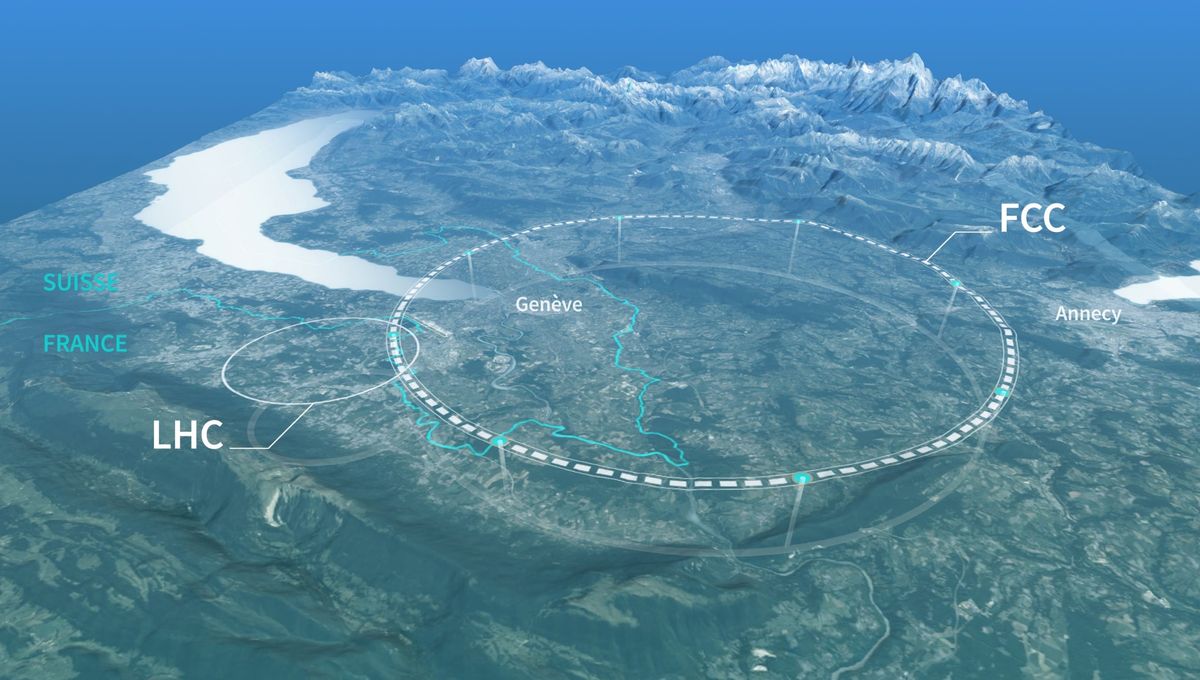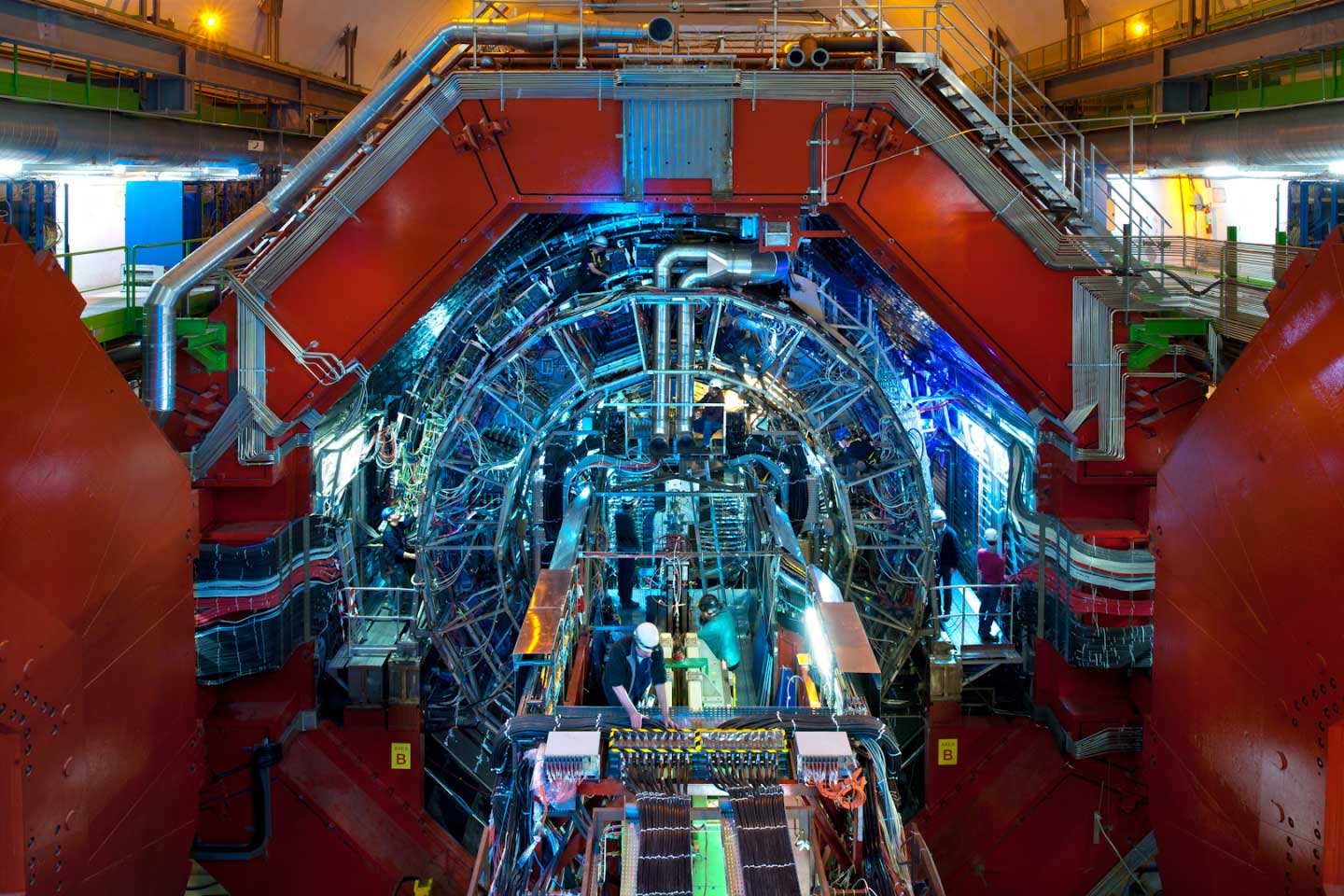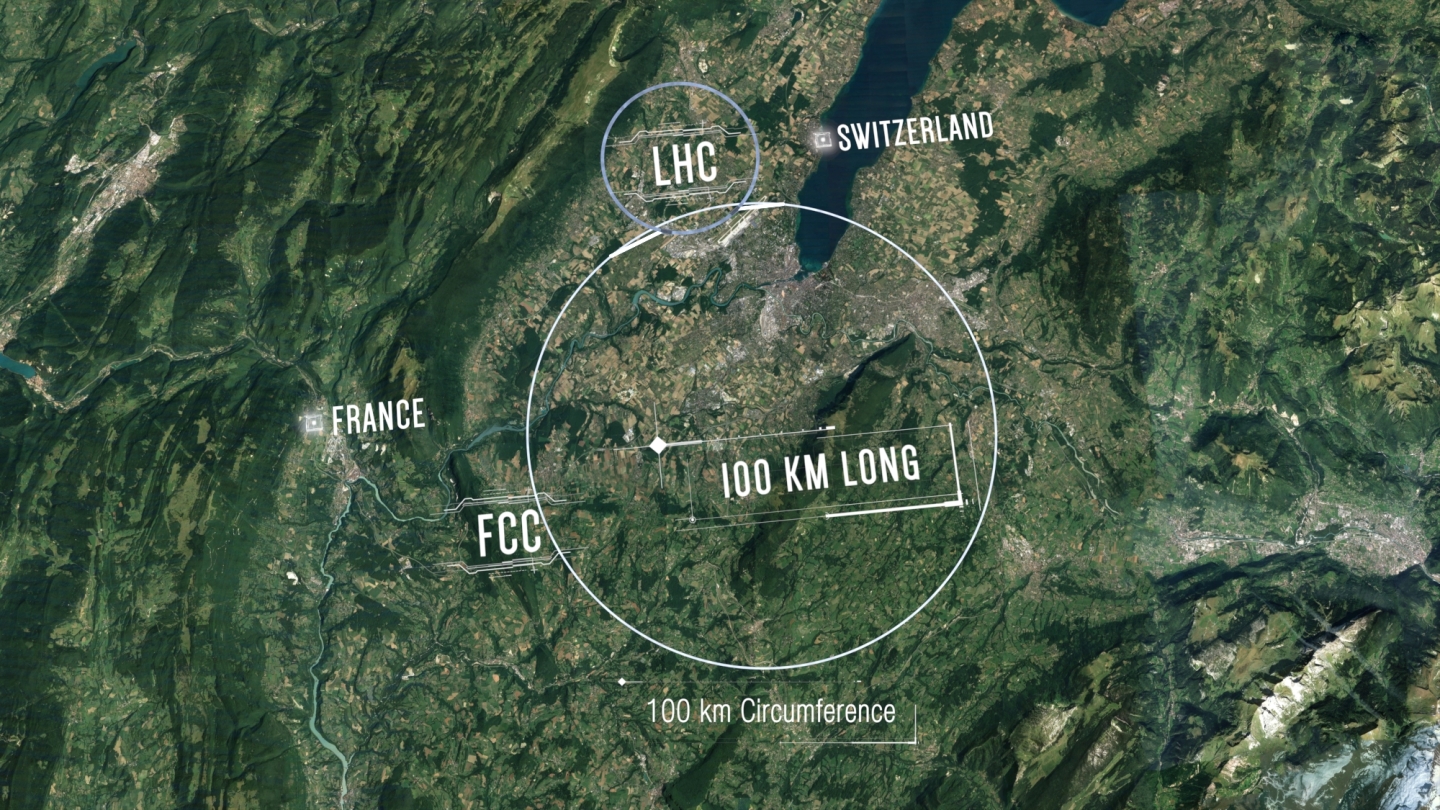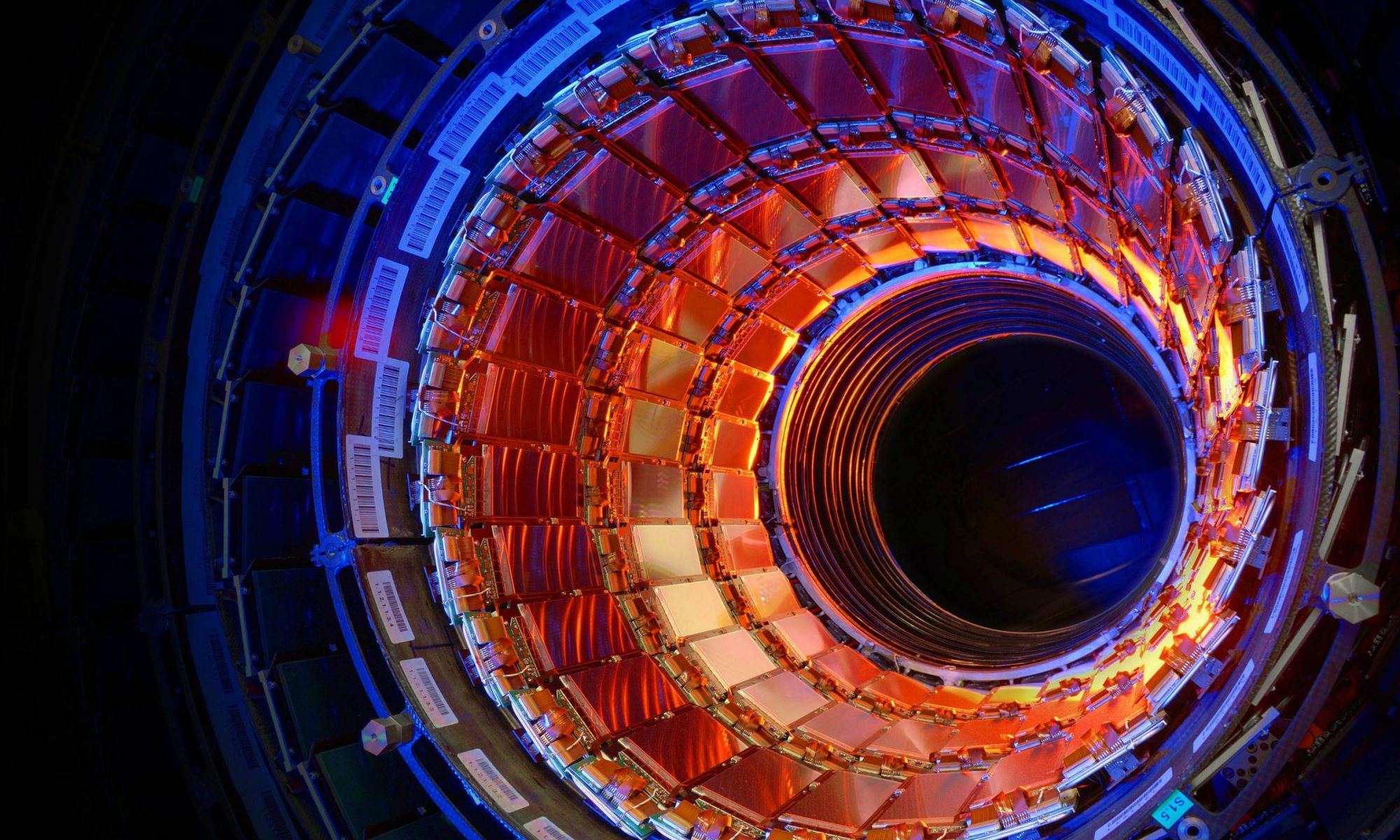One of my favourite science and engineering facts is that an underground river was frozen to enable the Large Hadron Collider (LHC) to be built! On its completion, it helped to complete the proverbial jigsaw of the Standard Model with is last piece, the Higgs Boson. But that’s about as far as it has got with no other exciting leaps forward in uniting gravity and quantum physics. Plans are now afoot to build a new collider that will be three times longer than the LHC and it will be capable of smashing particles together with significantly more energy.
Continue reading “CERN Wants to Build an Enormous New Atom Smasher: the Future Circular Collider”Anti-Helium Generated in the Large Hadron Collider can Help in the Search for Dark Matter
For decades, astrophysicists have theorized that the majority of matter in our Universe is made up of a mysterious invisible mass known as “Dark Matter” (DM). While scientists have not yet found any direct evidence of this invisible mass or confirmed what it looks like, there are several possible ways we could search for it soon. One theory is that Dark Matter particles could collide and annihilate each other to produce cosmic rays that proliferate throughout our galaxy – similar to how cosmic ray collisions with the interstellar medium (ISM) do.
This theory could be tested soon, thanks to research conducted using the A Large Ion Collider Experiment (ALICE), one of several detector experiments at CERN’s Large Hadron Collider (LHC). ALICE is optimized to study the results from collisions between nuclei that travel very close to the speed of light (ultra-relativistic velocities). According to new research by the ALICE Collaboration, dedicated instruments could detect anti-helium-3 nuclei (the anti-matter counterpart to He3) as they reach Earth’s atmosphere, thus providing evidence for DM.
Continue reading “Anti-Helium Generated in the Large Hadron Collider can Help in the Search for Dark Matter”CERN is Planning to Build a Much Larger Particle Collider. Much, Much, Larger.
CERN, the European Organization for Nuclear Research, wants to build a particle collider that will dwarf the Large Hadron Collider (LHC). The LHC has made important discoveries, and planned upgrades to its power ensures it will keep working on physics problems into the future. But eventually, it won’t be enough to unlock the secrets of physics. Eventually, we’ll need something larger and more powerful.
Enter the Future Circular Collider (FCC.) The FCC will exceed the LHC in power by an order of magnitude. On January 15th, the FCC collaboration released its Conceptual Design Report (CDR) that lays out the options for CERN’s Future Circular Collider.
Continue reading “CERN is Planning to Build a Much Larger Particle Collider. Much, Much, Larger.”The Large Hadron Collider has been Shut Down, and Will Stay Down for Two Years While they Perform Major Upgrades
The Large Hadron Collider (LHC) is getting a big boost to its performance. Unfortunately, for fans of ground-breaking physics, the whole thing has to be shut down for two years while the work is done. But once it’s back up and running, its enhanced capabilities will make it even more powerful.
Continue reading “The Large Hadron Collider has been Shut Down, and Will Stay Down for Two Years While they Perform Major Upgrades”
Another Strange Discovery From LHC That Nobody Understands
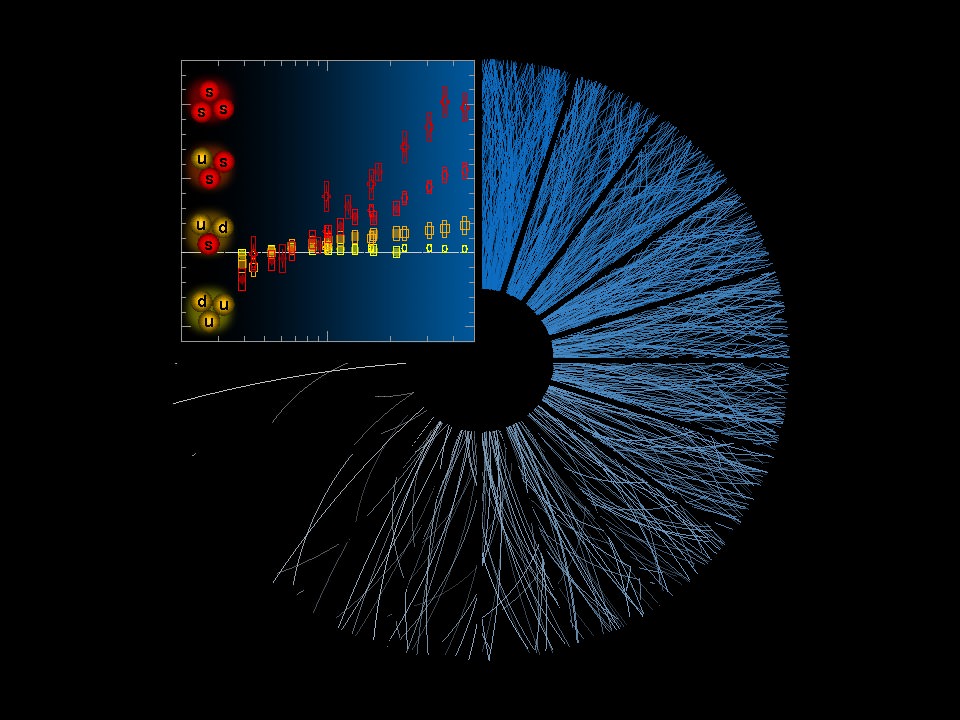
There are some strange results being announced in the physics world lately. A fluid with a negative effective mass, and the discovery of five new particles, are all challenging our understanding of the universe.
New results from ALICE (A Large Ion Collider Experiment) are adding to the strangeness.
ALICE is a detector on the Large Hadron Collider (LHC). It’s one of seven detectors, and ALICE’s role is to “study the physics of strongly interacting matter at extreme energy densities, where a phase of matter called quark-gluon plasma forms,” according to the CERN website. Quark-gluon plasma is a state of matter that existed only a few millionths of a second after the Big Bang.
In what we might call normal matter—that is the familiar atoms that we all learn about in high school—protons and neutrons are made up of quarks. Those quarks are held together by other particles called gluons. (“Glue-ons,” get it?) In a state known as confinement, these quarks and gluons are permanently bound together. In fact, quarks have never been observed in isolation.

The LHC is used to collide particles together at extremely high speeds, creating temperatures that can be 100,000 times hotter than the center of our Sun. In new results just released from CERN, lead ions were collided, and the resulting extreme conditions come close to replicating the state of the Universe those few millionths of a second after the Big Bang.
In those extreme temperatures, the state of confinement was broken, and the quarks and gluons were released, and formed quark-gluon plasma.
So far, this is pretty well understood. But in these new results, something additional happened. There was increased production of what are called “strange hadrons.” Strange hadrons themselves are well-known particles. They have names like Kaon, Lambda, Xi and Omega. They’re called strange hadrons because they each have one “strange quark.”
If all of this seems a little murky, here’s the dinger: Strange hadrons may be well-known particles, because they’ve been observed in collisions between heavy nuclei. But they haven’t been observed in collisions between protons.
“Being able to isolate the quark-gluon-plasma-like phenomena in a smaller and simpler system…opens up an entirely new dimension for the study of the properties of the fundamental state that our universe emerged from.” – Federico Antinori, Spokesperson of the ALICE collaboration.
“We are very excited about this discovery,” said Federico Antinori, Spokesperson of the ALICE collaboration. “We are again learning a lot about this primordial state of matter. Being able to isolate the quark-gluon-plasma-like phenomena in a smaller and simpler system, such as the collision between two protons, opens up an entirely new dimension for the study of the properties of the fundamental state that our universe emerged from.”
Enhanced Strangeness?
The creation of quark-gluon plasma at CERN provides physicists an opportunity to study the strong interaction. The strong interaction is also known as the strong force, one of the four fundamental forces in the Universe, and the one that binds quarks into protons and neutrons. It’s also an opportunity to study something else: the increased production of strange hadrons.
In a delicious turn of phrase, CERN calls this phenomenon “enhanced strangeness production.” (Somebody at CERN has a flair for language.)
Enhanced strangeness production from quark-gluon plasma was predicted in the 1980s, and was observed in the 1990s at CERN’s Super Proton Synchrotron. The ALICE experiment at the LHC is giving physicists their best opportunity yet to study how proton-proton collisions can have enhanced strangeness production in the same way that heavy ion collisions can.
According to the press release announcing these results, “Studying these processes more precisely will be key to better understand the microscopic mechanisms of the quark-gluon plasma and the collective behaviour of particles in small systems.”
I couldn’t have said it better myself.
CERN Declares War On The Standard Model
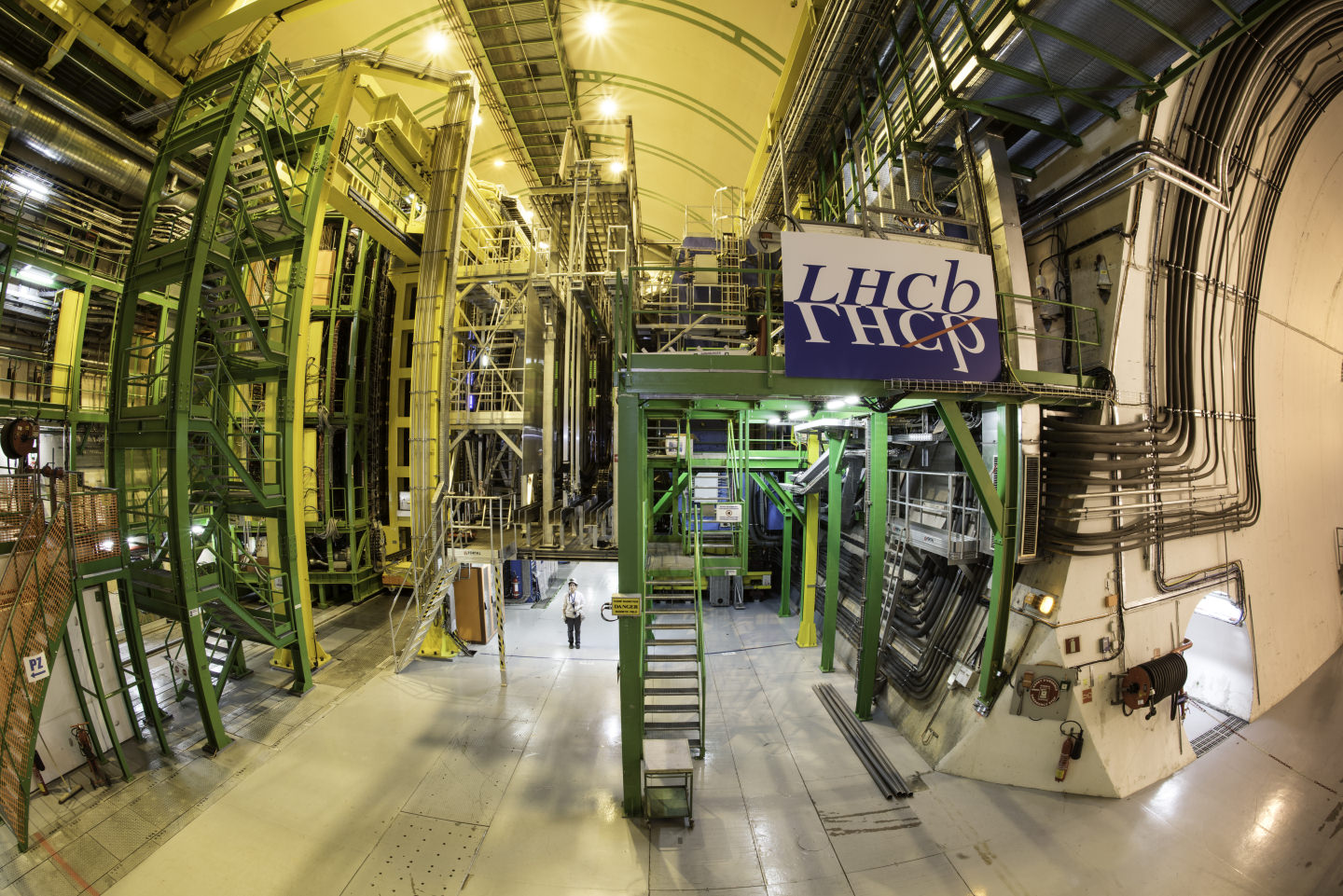
Ever since the discovery of the Higgs Boson in 2012, the Large Hadron Collider has been dedicated to searching for the existence of physics that go beyond the Standard Model. To this end, the Large Hadron Collider beauty experiment (LHCb) was established in 1995, specifically for the purpose of exploring what happened after the Big Bang that allowed matter to survive and create the Universe as we know it.
Since that time, the LHCb has been doing some rather amazing things. This includes discovering five new particles, uncovering evidence of a new manifestation of matter-antimatter asymmetry, and (most recently) discovering unusual results when monitoring beta decay. These findings, which CERN announced in a recent press release, could be an indication of new physics that are not part of the Standard Model.
In this latest study, the LHCb collaboration team noted how the decay of B0 mesons resulted in the production of an excited kaon and a pair of electrons or muons. Muons, for the record, are subatomic particles that are 200 times more massive than electrons, but whose interactions are believed to be the same as those of electrons (as far as the Standard Model is concerned).
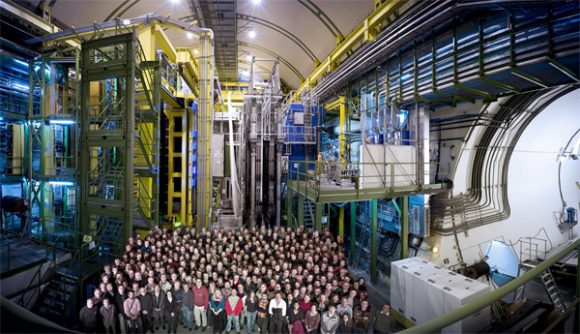
This is what is known as “lepton universality”, which not only predicts that electrons and muons behave the same, but should be produced with the same probability – with some constraints arising from their differences in mass. However, in testing the decay of B0 mesons, the team found that the decay process produced muons with less frequency. These results were collected during Run 1 of the LHC, which ran from 2009 to 2013.
The results of these decay tests were presented on Tuesday, April 18th, at a CERN seminar, where members of the LHCb collaboration team shared their latest findings. As they indicated during the course of the seminar, these findings are significant in that they appear to confirm results obtained by the LHCb team during previous decay studies.
This is certainly exciting news, as it hints at the possibility that new physics are being observed. With the confirmation of the Standard Model (made possible with the discovery of the Higgs boson in 2012), investigating theories that go beyond this (i.e. Supersymmetry) has been a major goal of the LHC. And with its upgrades completed in 2015, it has been one of the chief aims of Run 2 (which will last until 2018).
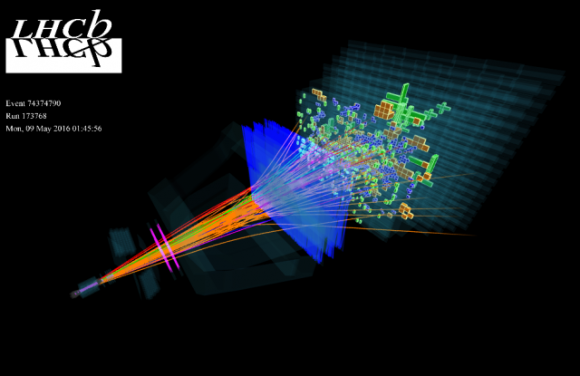
Naturally, the LHCb team indicated that further studies will be needed before any conclusions can be drawn. For one, the discrepancy they noted between the creation of muons and electrons carries a low probability value (aka. p-value) of between 2.2. to 2.5 sigma. To put that in perspective, the first detection of the Higgs Boson occurred at a level of 5 sigma.
In addition, these results are inconsistent with previous measurements which indicated that there is indeed symmetry between electrons and muons. As a result, more decay tests will have to be conducted and more data collected before the LHCb collaboration team can say definitively whether this was a sign of new particles, or merely a statistical fluctuation in their data.
The results of this study will be soon released in a LHCb research paper. And for more information, check out the PDF version of the seminar.
Large Hadron Collider Discovers 5 New Gluelike Particles
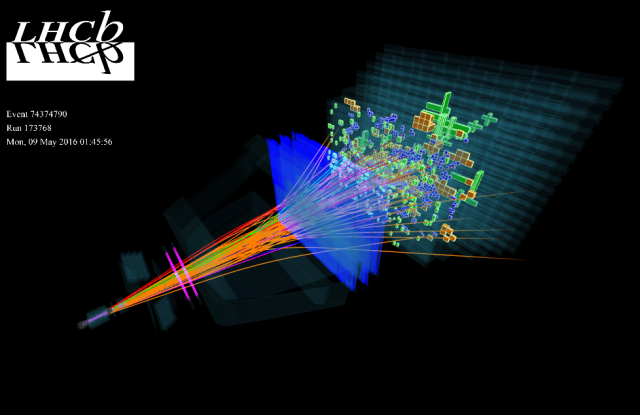
Since it began its second operational run in 2015, the Large Hadron Collider has been doing some pretty interesting things. For example, starting in 2016, researchers at CERN began using the collide to conduct the Large Hadron Collider beauty experiment (LHCb). This is investigation seeks to determine what it is that took place after the Big Bang so that matter was able to survive and create the Universe that we know today.
In the past few months, the experiment has yielded some impressive results, such as the measurement of a very rare form of particle decay and evidence of a new manifestation of matter-antimatter asymmetry. And most recently, the researchers behind LHCb have announced the discovery of a new system of five particles, all of which were observed in a single analysis.
According to the research paper, which appeared in arXiv on March 14th, 2017, the particles that were detected were excited states of what is known as a “Omega-c-zero” baryon. Like other particles of its kind, the Omega-c-zero is made up of three quarks – two of which are “strange” while the third is a “charm” quark. The existence of this baryon was confirmed in 1994. Since then, researchers at CERN have sought to determine if there were heavier versions.

And now, thanks to the LHCb experiment, it appears that they have found them. The key was to examine the trajectories and the energy left in the detector by particles in their final configuration and trace them back to their original state. Basically, Omega-c-zero particles decay via the strong force into another type of baryon (Xi-c-plus) and then via the weak force into protons, kaons, and pions.
From this, the researchers were able to determine that what they were seeing were Omega-c-zero particles at different energy states (i.e. of different sizes and masses). Expressed in megaelectronvolts (MeV), these particles have masses of 3000, 3050, 3066, 3090 and 3119 MeV, respectively. This discovery was rather unique, since it involved the detection of five higher energy states of a particle at the same time.
This was made possible thanks to the specialized capabilities of the LHCb detector and the large dataset that was accumulated from the first and second runs of the LHC – which ran from 2009 to 2013, and since 2015, respectively. Armed with the right equipment and experience, the researchers were able to identify the particles with an overwhelming level of certainty, ruling out the possibility that it was a statistical fluke in the data.
The discovery is also expected to shed light on some of the deeper mysteries of subatomic particles, like how the three constituent quarks are bound inside a baryon by the “strong force” – i.e. the fundamental force that is responsible for holding the insides of atoms together. Another mystery that this could help resolve in the correlation between different quark states.
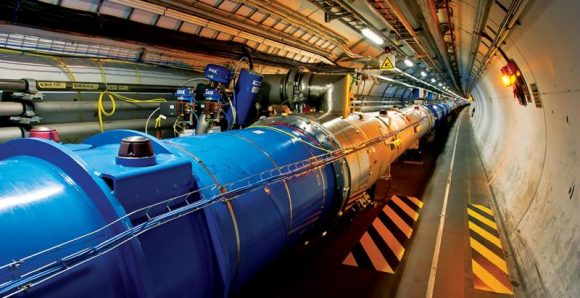
As Dr Greig Cowan – a researcher from the University of Edinburgh who works on the LHCb experiment at Cern’s LHC – explained in an interview with the BBC:
“This is a striking discovery that will shed light on how quarks bind together. It may have implications not only to better understand protons and neutrons, but also more exotic multi-quark states, such as pentaquarks and tetraquarks.“
The next step will be to determine the quantum numbers of these new particles (the numbers used to identify the properties of a specific particle) as well as determining their theoretical significance. Since it came online, the LHC has been helping to confirm the Standard Model of particle physics, as well as reaching beyond it to explore the greater unknowns of how the Universe came to be, and how the fundamental forces that govern it fit together.
In the end, the discovery of these five new particles could be a crucial step along the road towards a Theory of Everything (ToE), or just another piece in the very big puzzle that is our existence. Stay tuned to see which!

